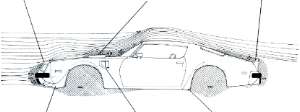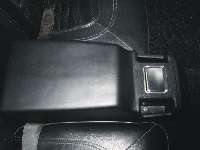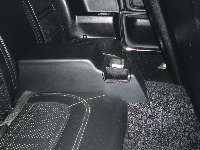|
|
DIVISION |
NOM DE VENTE |
GROUPE |
SERIE |
STYLE |
MODEL |
|
PONTIAC |
FIREBIRD |
F |
22300 |
22687 |
2U87 |
|
Il existe 4 models de FIREBIRD:
- Firebird Base, series 2S
- Firebird Esprit, series 2T
- Firebird Formula, series 2U
- Trans Am, series 2V
|
|
Formula Variations:
- Grille avant en nid d'abeille (petit carré sur les précédents, grand carré ensuite)
- Nouvelle option "Unitized" allumage électronique
- Moteur éssentiellement les même moteurs que les versions précedentes
- N ° L75 ordinaire 455
- 175 ch (L30) 350 moteur (2544 fabriqués)
- 250 ch (L78) 400 moteur (2429 fabriqués)
- 300 HP (LS5) 455HO moteur (276 fabriqués)
- 5249 produit au totale
|
|
La plupart des consommateurs de l'époque commencais a avoir une idée de l'importance de l'aérodynamique sur une voiture de production, les concepteurs de la Firebird ont particulierement soigné cet aspect.
De ce fait le client estimais que c'etait la voiture la plus aérodynamique de l'époque. |
|

|
|
1970-1973 - The original front spoiler was an integral part of the aero package of the Trans Am. The spoiler was about three-inches deep and was painted body color unlike the black spoiler of the original 1969 Trans Am. The spoiler ran full width and the ends flowed into the front wheel spats. The front spoiler added real aerodynamic downforce, again at a time in the auto industry was more interested in form over function. So natural and effective this spoiler was, it was used pretty much "as is" when raced in the S.C.C.A. Trans Am series, much unlike today's silhouette cars which run in the series. |
|
Rear Spoiler Vairiations
While the front spoiler went thru numerous changes during the twelve year production run, the rear spoiler was limited to two, and these changes were limited to the end caps. Before we examine the end caps singularly, let's look at the rear spoiler as a unit. When viewed end on the spoiler appears to be an efficient devise, carefully breaking up the airflow as it leaves the decklid, lowering drag and increasing downforce. Yes, that's correct, a rear spoiler at highway speeds (around 70 mph) as the original designers had intended creates about 50 pounds of positive downforce. While 50-lbs. of downforce may not seem much in light of modern racing cars creating hundreds of pounds of downforce remember the average passenger car creates lift as if travels down the freeway.
Although the downforce generated is wonderful, if the engineers would have truely had their way the spoiler end caps would have taken on a different shape entirely. The designers made original caps come down to almost a point with a rounded top which actually spills air off the spoiler around the back of the car. Pontiac engineers wanted a spoiler that was more squared off and came down the sides straight, to give just that little bit more downforce. Sound familiar, because if you look at the Camaro rear spoiler, this is what Pontiac engineers had in mind.
When 1979 rolled around, the Trans Am got some softer shapes. The new nose was softened to break the wind better. The rear bumper was all new as was the entire rear end treatment except for the center section of the rear spoiler. What was new for the rear spoiler were the end caps. The end caps were much larger at the bottom, instead of coming down to a near point, the end caps had a horizontal detail line that met up with a vertical one that followed the leading edge of the end cap.
Opinions vary as to which rear spoiler looks the best. The original is tough to beat and did survive for nine years. But the rear spoiler that was used for the final three years was certainly more aggressive, despite being softened, so it to has its own appeal. Like the front spoiler, the rear spoiler is ultimately decided by the year of the car. |
|
 
|
| Rear Seat Console Of all the neat features ever to grace a Trans Am, the rear seat console has to be one of the best. Ahead of its time, the option had a short lived lifespan, seven production years; 1971-1977. When introduced, the rear seat console gave the rear passengers a center armrest as well as a place to put the inboard seat belt buckles. In 1973, outboard retractors eliminated the buckles with adjusters. Now the belt webbing was not long enough for the new buckles to fit in the console pockets. While the rear seat console no longer had a functional purpose, the appearance factor was well worth the small cost. In hindsight we can say this, but the reality at the time must have been different. Usually GM will eliminate an option when it falls below the 5% penetration level. This means in 1977 there was a likihood of only around 7,800 rear seat consoles being ordered (accross the entire Firebird line), so the rarity of this item (as a percentage level) is nearly equivilant to a 1970 Ram Air IV!. |
| |
SUITE ...
| |
|





